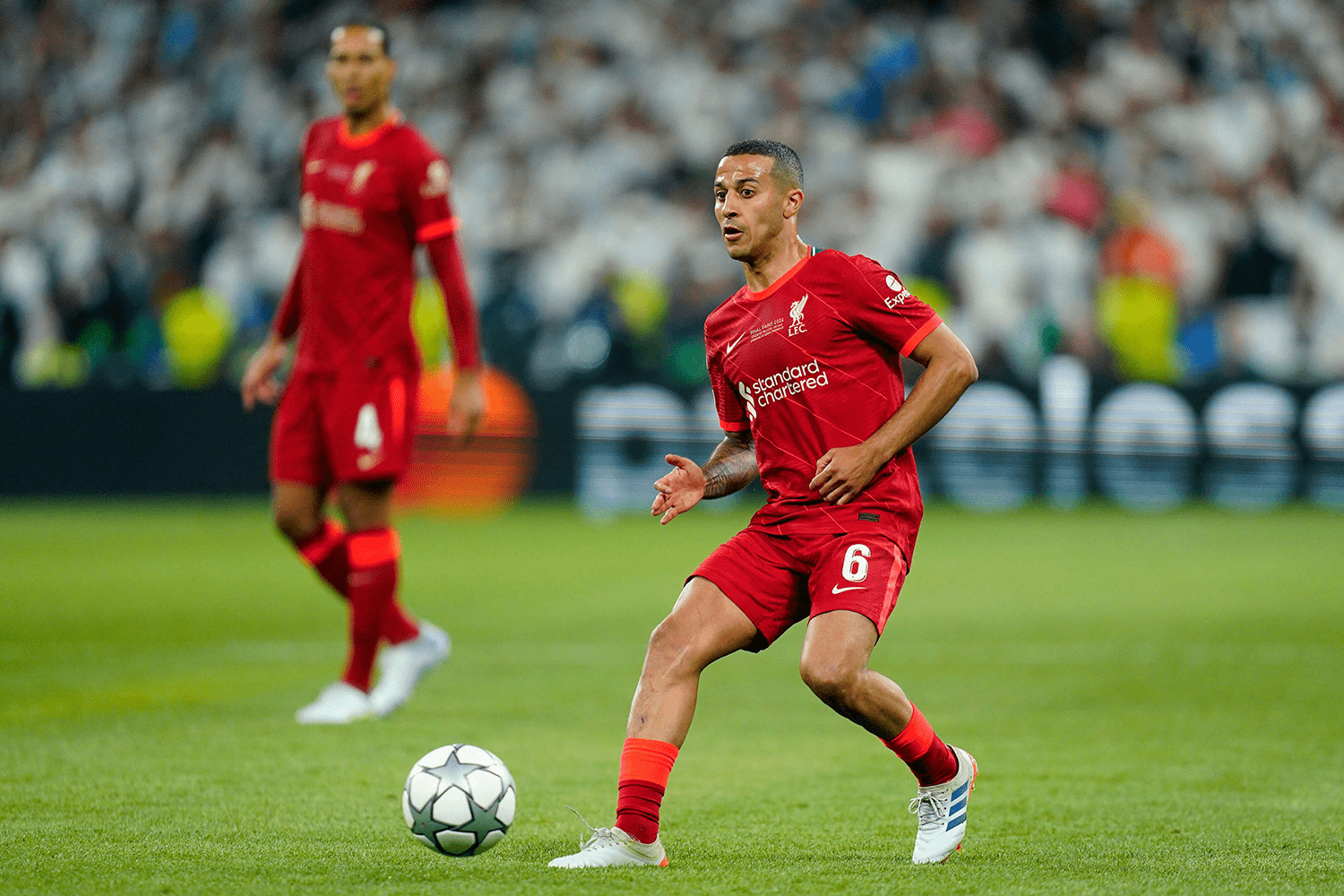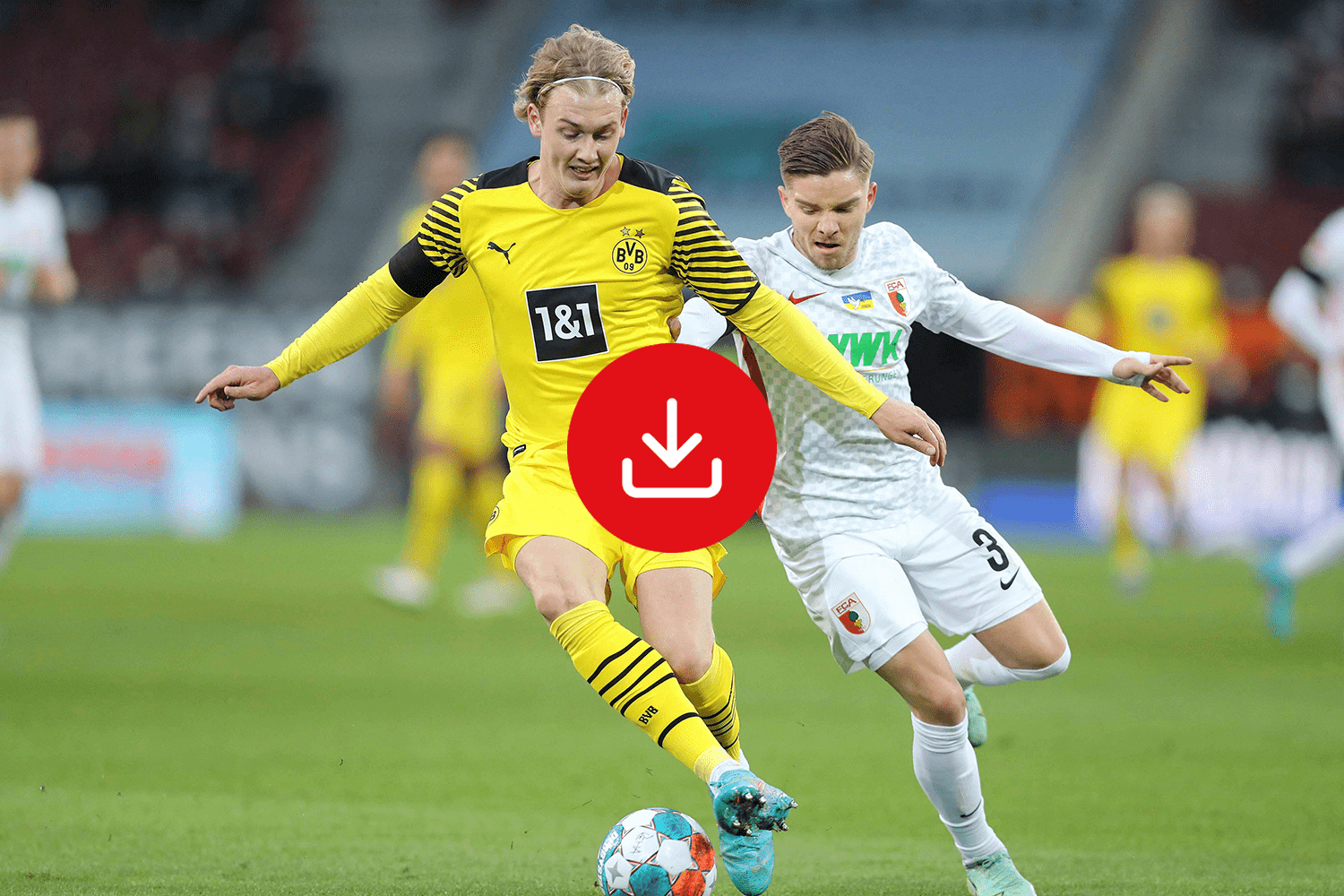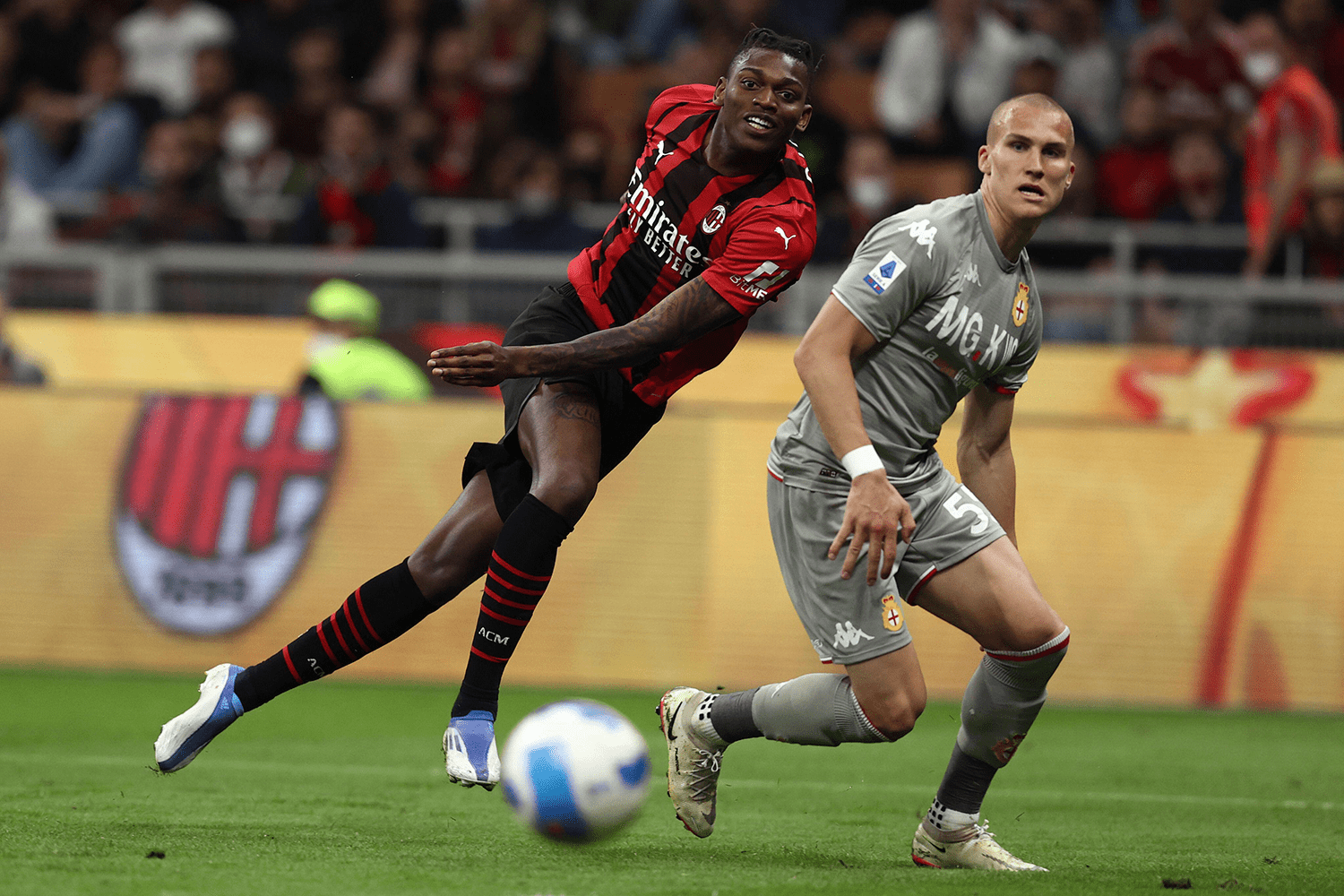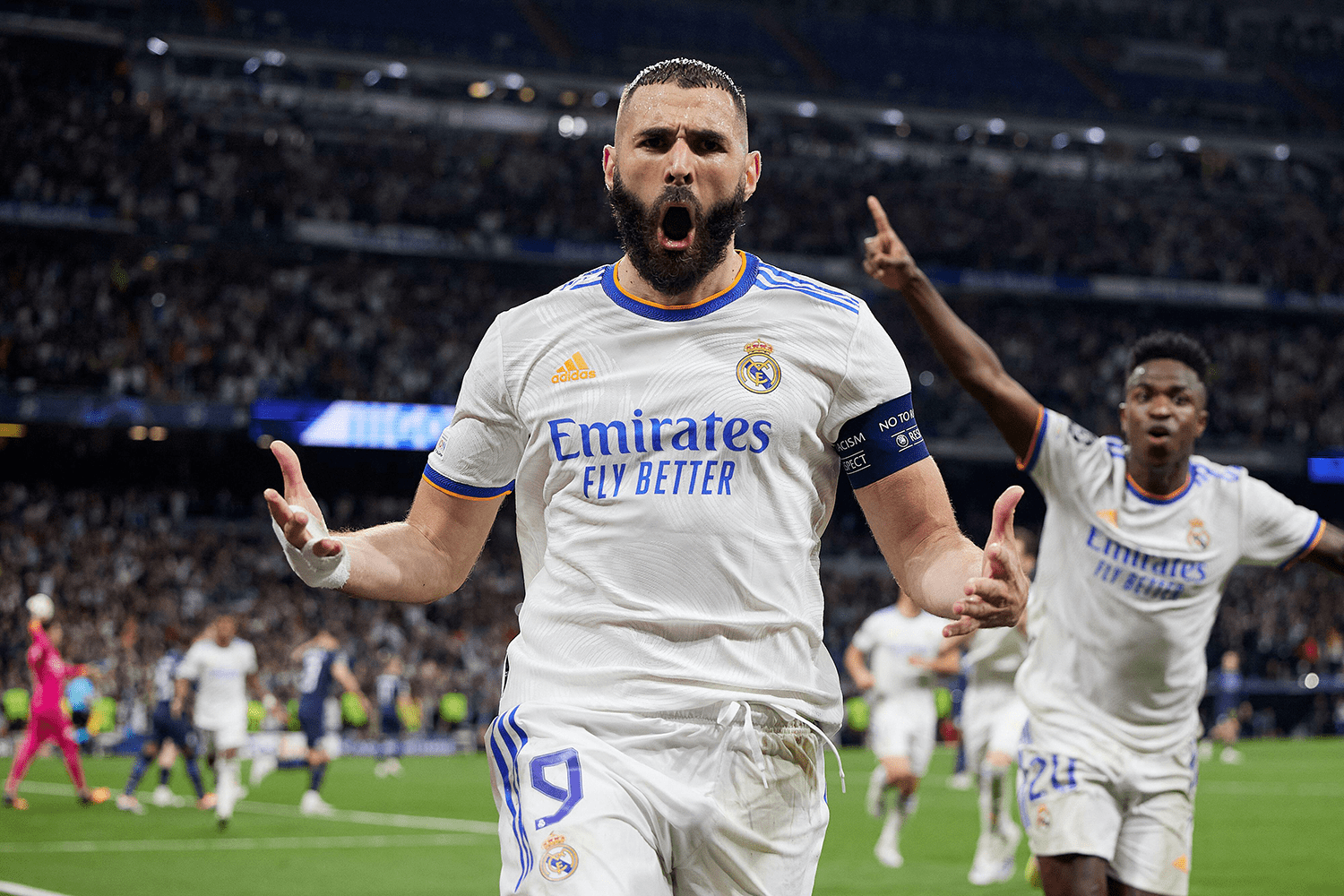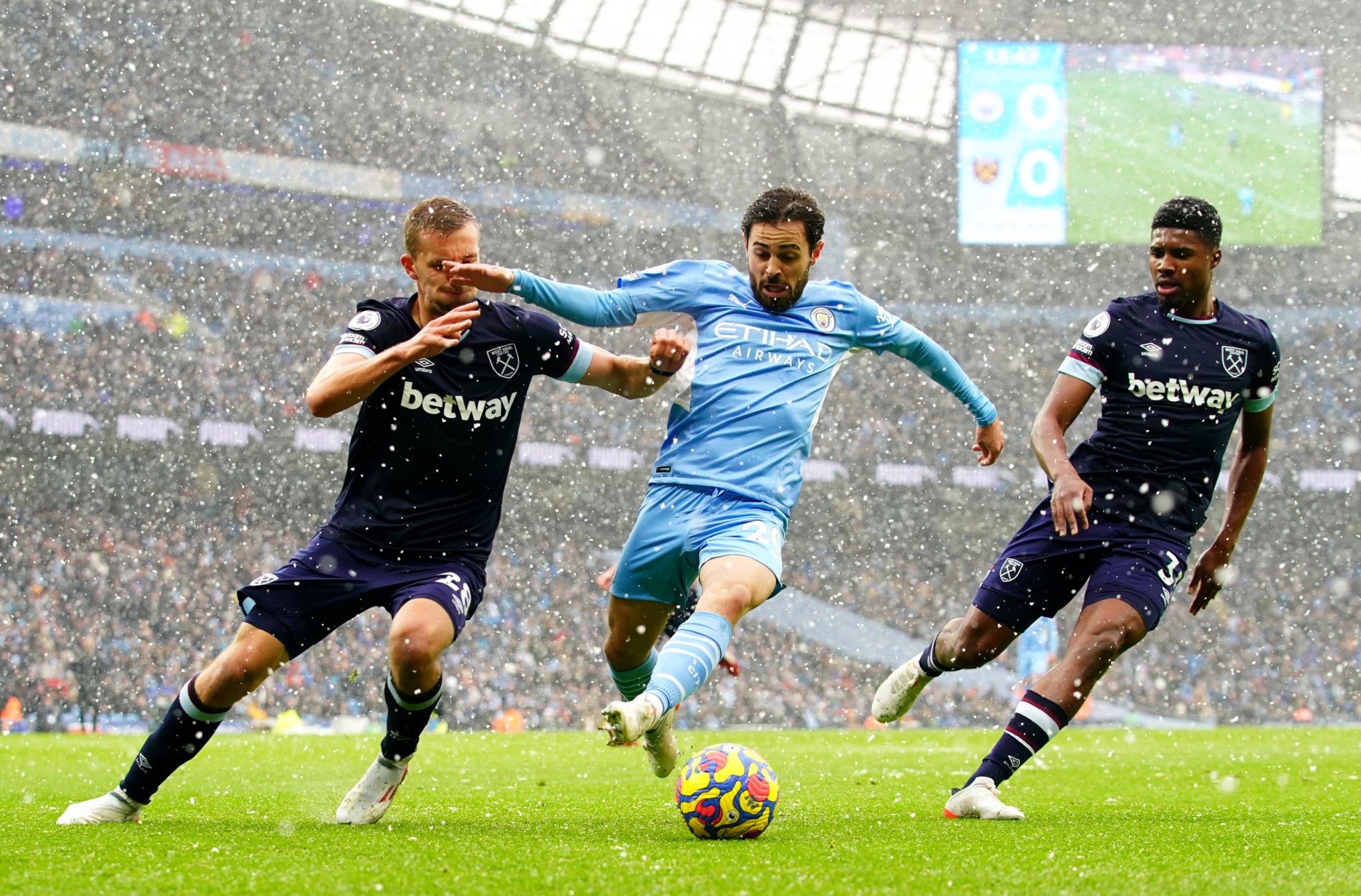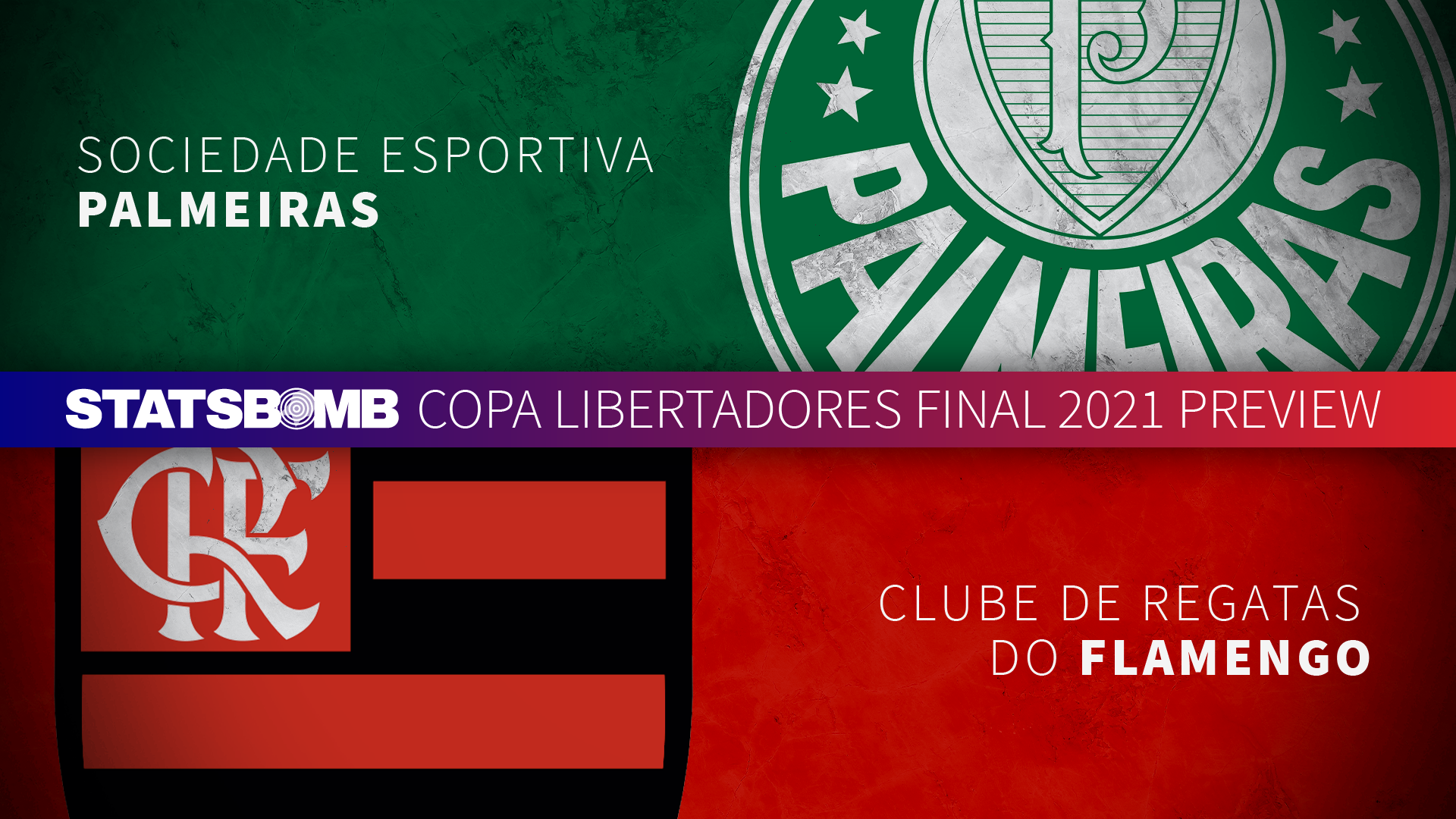Ted and James return to talk about StatsBomb's new Expected Goals model, packing versus OBV/Possession value models and the evolution of football teams getting smarter and winning trophies - lots of them.
Earlier this year, we produced a report on the defensive styles of teams in the German Bundesliga. We’ve now updated the report to include all data up to the end of the season, and are releasing it publicly.
Flamengo and Palmeiras are the last two winners of the Copa Libertadores, and one of them will again get their hands on the trophy when they meet in the final of the 2021 edition in Montevideo on Saturday. It is the second consecutive all-Brazilian final and one that features representatives from each of its two primary cities: Rio de Janeiro and São Paulo. Both teams are on course to finish in the top three domestically this season -- although only Flamengo still have a chance of overhauling champions elect Atlético Mineiro -- and while Flamengo have been the better team in terms of both results and the underlying numbers over the course of the campaign, the difference isn’t so great as to think the result of the final is a foregone conclusion. Flamengo are a much more possession-orientated team, building up short from the back and into midfield and dominating the ball in their matches. They hold a 60% share of possession on average -- four percentage points clear of the next team. Palmeiras hover much closer to the 50% mark and are more direct in their approach, with one of the longest average pass lengths in the league. This difference in approach is evident if we look at the zones from which the two teams create most danger. With the help of On-Ball Value (OBV), our new model that values every on-ball action in terms of its positive or negative impact on a team’s likelihood of scoring / not conceding, we can visualise the areas of the pitch from which they generate most value in comparison to the league average.  Flamengo are a lot more active through the centre of the pitch and particularly in the interior channels of the attacking midfield line, from where they create the majority of their chances. From the left, the value is added by Giorgian de Arrascaeta's incisive passing and Michael's aggressive carries; from the right, primarily by the passing of striker Gabriel Barbosa. Barbosa, scorer of the two late goals that gave Flamengo their dramatic win over River Plate in the 2019 final, plays as the lone striker in Renato Gaucho's habitual 4-2-3-1 formation and is the club's top scorer in the Libertadores, but he is far from their only goal threat. Flamengo have the best top-line and underlying attacking numbers in Brazil, in addition to averaging 2.75 goals per match in the Libertadores, and Bruno Henrique and Michael have also reached double figures in league play.
Flamengo are a lot more active through the centre of the pitch and particularly in the interior channels of the attacking midfield line, from where they create the majority of their chances. From the left, the value is added by Giorgian de Arrascaeta's incisive passing and Michael's aggressive carries; from the right, primarily by the passing of striker Gabriel Barbosa. Barbosa, scorer of the two late goals that gave Flamengo their dramatic win over River Plate in the 2019 final, plays as the lone striker in Renato Gaucho's habitual 4-2-3-1 formation and is the club's top scorer in the Libertadores, but he is far from their only goal threat. Flamengo have the best top-line and underlying attacking numbers in Brazil, in addition to averaging 2.75 goals per match in the Libertadores, and Bruno Henrique and Michael have also reached double figures in league play.  In terms of advancing the ball into attacking areas, it is the contribution of ex-Atlético Madrid and Chelsea left-back Filipe Luís that stands out. He is much more active in infield areas than the average Serie A full-back -- on the other side of the pitch either Mauricio Isla or the promising Matheuzinho generally play much higher and wider -- and leads both his team and the league in deep progressions (passes or carries into the final third), distance advanced towards goal in the attacking half and once all actions directly related to shots have been stripped out, OBV. At 36, he's still going strong.
In terms of advancing the ball into attacking areas, it is the contribution of ex-Atlético Madrid and Chelsea left-back Filipe Luís that stands out. He is much more active in infield areas than the average Serie A full-back -- on the other side of the pitch either Mauricio Isla or the promising Matheuzinho generally play much higher and wider -- and leads both his team and the league in deep progressions (passes or carries into the final third), distance advanced towards goal in the attacking half and once all actions directly related to shots have been stripped out, OBV. At 36, he's still going strong.  Ball progression is more evenly split between the two sides of the pitch at Palmeiras, with a mix of carries and passes from Dudu on the left -- second to Filipe Luis in the league in terms of distance advanced towards goal in the attacking half -- allied to the regular forward movements of right-back Marcos Rocha (or his deputy Gabriel Menino). Further back, Luan is among the Serie A central defenders who add most value with their passing according to OBV.
Ball progression is more evenly split between the two sides of the pitch at Palmeiras, with a mix of carries and passes from Dudu on the left -- second to Filipe Luis in the league in terms of distance advanced towards goal in the attacking half -- allied to the regular forward movements of right-back Marcos Rocha (or his deputy Gabriel Menino). Further back, Luan is among the Serie A central defenders who add most value with their passing according to OBV.  The right is, though, undoubtedly their most productive side in terms of chance creation, with the dark red colouration inside the area there on the OBV chart above primarily representing the excursions of Rocha, forward Rony and attacking-midfield drifter Gustavo Scarpa. Scarpa has been Palmeiras' most profile shooter and chance creator in the league this season, with three non-penalty goals and 11 assists to his credit and the league's highest OBV contribution per 90 amongst all players with at least 900 minutes of playing time. But he has seen comparatively few minutes in the Libertadores and is most likely to start the final from the bench. With Luiz Adriano expected to miss out through injury, coach Abel Ferreira is likely to start Rony as the main striker in a formation that could vary between a 4-3-2-1 and 3-4-2-1 depending on the positioning of Felipe Melo, still going at 38. In the league, Rony has spent more time out wide than he did last season, with a consequent effect on his shot volume and goal output, but he is the team's top scorer in the Libertadores, with six goals to his credit -- 0.78 per 90.
The right is, though, undoubtedly their most productive side in terms of chance creation, with the dark red colouration inside the area there on the OBV chart above primarily representing the excursions of Rocha, forward Rony and attacking-midfield drifter Gustavo Scarpa. Scarpa has been Palmeiras' most profile shooter and chance creator in the league this season, with three non-penalty goals and 11 assists to his credit and the league's highest OBV contribution per 90 amongst all players with at least 900 minutes of playing time. But he has seen comparatively few minutes in the Libertadores and is most likely to start the final from the bench. With Luiz Adriano expected to miss out through injury, coach Abel Ferreira is likely to start Rony as the main striker in a formation that could vary between a 4-3-2-1 and 3-4-2-1 depending on the positioning of Felipe Melo, still going at 38. In the league, Rony has spent more time out wide than he did last season, with a consequent effect on his shot volume and goal output, but he is the team's top scorer in the Libertadores, with six goals to his credit -- 0.78 per 90.  At the other end of the pitch, there is an even starker difference in approach between the two sides. Flamengo not only defend further away from their own goal than any other Serie A side, but they are also one of the league's most aggressive teams in closing down opponents, particularly so directly after losing possession.
At the other end of the pitch, there is an even starker difference in approach between the two sides. Flamengo not only defend further away from their own goal than any other Serie A side, but they are also one of the league's most aggressive teams in closing down opponents, particularly so directly after losing possession.  Palmeiras, meanwhile, defend marginally deeper than the league average, and are clearly less active defensively in the opposition half.
Palmeiras, meanwhile, defend marginally deeper than the league average, and are clearly less active defensively in the opposition half.  Interestingly, though, both appear equally proficient in converting opposition turnovers into efforts on goal, figuring amongst the Serie A teams who most often shoot and score within 20 seconds of regaining possession. Flamengo and Palmeiras have already met twice in the league this season, with Flamengo emerging victorious on both occasions. They won 1-0 with a dominant performance on the opening day of the season and then 3-1 away from home a couple of months back in what was actually a closer match in terms of chance quantity and quality. Flamengo are again the most probable victors on Saturday, but Palmeiras have already seen off two other Brazilian teams to make it this far, and the reigning champions certainly shouldn't be discounted. The stage is set for an entertaining final.
Interestingly, though, both appear equally proficient in converting opposition turnovers into efforts on goal, figuring amongst the Serie A teams who most often shoot and score within 20 seconds of regaining possession. Flamengo and Palmeiras have already met twice in the league this season, with Flamengo emerging victorious on both occasions. They won 1-0 with a dominant performance on the opening day of the season and then 3-1 away from home a couple of months back in what was actually a closer match in terms of chance quantity and quality. Flamengo are again the most probable victors on Saturday, but Palmeiras have already seen off two other Brazilian teams to make it this far, and the reigning champions certainly shouldn't be discounted. The stage is set for an entertaining final.
A base de dados da StatsBomb é a única criada por profissionais de futebol. Com mais detalhe e precisão do que os dados de outros fornecedores, a StatsBomb é a melhor opção para clubes habilidosos, agências, grupos de mídia e casas de apostas. Quer saber mais? www.statsbomb.com/pt
Sorry to keep you waiting, Villa fans. There’s been a lot to evaluate. The club made big forward strides last season, strides so big that most people forgot all about the anxious last-day wait Villa had to endure just to maintain their Premier League status at the end of 2019/20. Now established in midtable, the club faces a new challenge. Before we get into the summer’s events and where that leaves Villa in the short and medium-term, let’s take a quick look back on the 2020/21 season as a whole. Surviving by a single point the season before, the Villains added a whopping 20 points to their tally to finish comfortable in 11th place, a full ten points ahead of Newcastle in 12th. This wasn’t just keeping relegation at arm's length but shoving it out of sight and out of mind. An improvement in the on-pitch performances powered the leap up the table: Villa turned a near-league-worst expected goal difference, -0.62 xGD per game, into a comfortable midtable process, bang on +0 xGD per game over the whole season.  They improved at both ends of the pitch, adding 0.28 xG per game onto the attack (~10 goals a season) and shaving -0.34 xG per game off the defence (~13 goals a season). At the back, they conceded fewer shots (15.8 – 14.1) that were of a worse quality measured by xG per shot (0.10 – 0.09). They were defending better as a collective, with goalkeeper Emiliano Martínez having a stellar season when the opposition did manage to create an attempt on goal. Digging into what they did to limit the opposition, it becomes clear that Villa started to protect the goal more effectively, defending their penalty box with more bodies and a greater emphasis on making it difficult for the opposition to score. The team became more balanced and more challenging to break down – they forced their opponents average shot distance back by more than a metre, 15.8m in 2019/20 versus 16.9m in 2020/21. A difference that sounds small, but their opposition shots were 6th-closest in the league before and 17th-closest after. Besides being more difficult to break down, they also effectively prevented the opposition from getting a clear sight of goal. Villa averaged the most defenders behind the ball when their opponents took a footed shot in the box, and the most defenders between ball and goal in the same circumstances. Naturally, they also had one of the best block rates of those same shots. You can’t concede goals if the ball doesn’t test the ‘keeper in the first place.
They improved at both ends of the pitch, adding 0.28 xG per game onto the attack (~10 goals a season) and shaving -0.34 xG per game off the defence (~13 goals a season). At the back, they conceded fewer shots (15.8 – 14.1) that were of a worse quality measured by xG per shot (0.10 – 0.09). They were defending better as a collective, with goalkeeper Emiliano Martínez having a stellar season when the opposition did manage to create an attempt on goal. Digging into what they did to limit the opposition, it becomes clear that Villa started to protect the goal more effectively, defending their penalty box with more bodies and a greater emphasis on making it difficult for the opposition to score. The team became more balanced and more challenging to break down – they forced their opponents average shot distance back by more than a metre, 15.8m in 2019/20 versus 16.9m in 2020/21. A difference that sounds small, but their opposition shots were 6th-closest in the league before and 17th-closest after. Besides being more difficult to break down, they also effectively prevented the opposition from getting a clear sight of goal. Villa averaged the most defenders behind the ball when their opponents took a footed shot in the box, and the most defenders between ball and goal in the same circumstances. Naturally, they also had one of the best block rates of those same shots. You can’t concede goals if the ball doesn’t test the ‘keeper in the first place.  As good as the improvement was, Villa struggled in the second half of the season. They closed the season with a 4-4-6 record to take just 16 points from 14 games, worth 43 points when extrapolated over the whole season, solid bottom-half form. It could be an indicator of what may come next season, with the run coinciding with the injury to *klaxon* Jack Grealish (I made it this far without saying his name), but even with signings brought in to replace him, there was still a worrying decline in the underlying numbers. Both defence and attack got worse.
As good as the improvement was, Villa struggled in the second half of the season. They closed the season with a 4-4-6 record to take just 16 points from 14 games, worth 43 points when extrapolated over the whole season, solid bottom-half form. It could be an indicator of what may come next season, with the run coinciding with the injury to *klaxon* Jack Grealish (I made it this far without saying his name), but even with signings brought in to replace him, there was still a worrying decline in the underlying numbers. Both defence and attack got worse.  Right then, let’s hang around no longer. Time to address the big question that everyone’s asking. How will Villa cope without Jack Grealish? A look at Villa’s most common build-up patterns has the thick-calved Brummie’s footprints all over them. Nearly all of their play was filtered down the left-hand side where Grealish would situate and perform his best work, combining with Ollie Watkins and Matt Targett and laying on chances for his teammates.
Right then, let’s hang around no longer. Time to address the big question that everyone’s asking. How will Villa cope without Jack Grealish? A look at Villa’s most common build-up patterns has the thick-calved Brummie’s footprints all over them. Nearly all of their play was filtered down the left-hand side where Grealish would situate and perform his best work, combining with Ollie Watkins and Matt Targett and laying on chances for his teammates. 
 Grealish was on a different level to his teammates last season, and indeed most of the Premier League. Our new possession value model, On-Ball Value, assigns a positive or negative value to each action performed on the pitch based on its impact on a team’s chances of scoring or conceding. Players such as Kevin De Bruyne, Trent Alexander-Arnold, and Mohamed Salah all performed well by this measure. Guess who topped the league?
Grealish was on a different level to his teammates last season, and indeed most of the Premier League. Our new possession value model, On-Ball Value, assigns a positive or negative value to each action performed on the pitch based on its impact on a team’s chances of scoring or conceding. Players such as Kevin De Bruyne, Trent Alexander-Arnold, and Mohamed Salah all performed well by this measure. Guess who topped the league?  Looking purely at chance creation output metrics, Grealish’s importance to Villa’s attacking play becomes apparent. He was responsible for an overwhelming portion of their chance creation – 23% of Villa’s assisted xG was created by Grealish – and he was also responsible for taking 9% of their xG himself, behind only Ollie Watkins, Bertrand Traoré and Anwar El Ghazi.
Looking purely at chance creation output metrics, Grealish’s importance to Villa’s attacking play becomes apparent. He was responsible for an overwhelming portion of their chance creation – 23% of Villa’s assisted xG was created by Grealish – and he was also responsible for taking 9% of their xG himself, behind only Ollie Watkins, Bertrand Traoré and Anwar El Ghazi.  The scatterplot highlights the need for Villa to become less reliant on Grealish – of which they have no choice – and Ollie Watkins, with Watkins responsible for 29% of Villa’s xG. It’s not unusual for a team to have a focal point who finishes most of their chances, but it does leave them in a precarious position without a) adequate contributions from elsewhere in the team and b) quality backup should Watkins get injured. Upon Grealish’s nine-figure sale to Manchester City, Villa CEO Christian Purslow published a statement that specifically addressed the transfer. In the statement, he said:
The scatterplot highlights the need for Villa to become less reliant on Grealish – of which they have no choice – and Ollie Watkins, with Watkins responsible for 29% of Villa’s xG. It’s not unusual for a team to have a focal point who finishes most of their chances, but it does leave them in a precarious position without a) adequate contributions from elsewhere in the team and b) quality backup should Watkins get injured. Upon Grealish’s nine-figure sale to Manchester City, Villa CEO Christian Purslow published a statement that specifically addressed the transfer. In the statement, he said:
“It was never our intention to replace Jack with one footballer. Our strategy was to analyse and break down Jack’s key attributes - his creativity, his assists, and his goals - and to find these qualities, and others, in three forward players.”
In come Danny Ings from Southampton, Leon Bailey from Bayer Leverkusen, and Emi Buendía from Norwich. By bringing Buendía in, Villa have in many ways done to Norwich what Manchester City have done to them. Buendía was the creative hub at Norwich, a player that stood out above the rest, and was responsible for a very similar amount of Norwich’s output, with 22% of Norwich xG Assisted coming through the Argentine and 16% of their xG. It’s not just in the final third that Buendía can do it though. He was one of the most active defenders in the Championship last season, registering more possession-adjusted pressures than anyone else in the league. His overall contribution was key to Norwich’s play both in and out of possession, and Buendía was third in the Championship for On-Ball Value, taking into account all his actions on the pitch.  Leon Bailey is an established top-tier player on the European circuit after four seasons in the Bundesliga with Bayer Leverkusen. Last season was arguably Bailey’s strongest since moving to Germany, contributing nine goals and seven assists as Leverkusen finished 6th to qualify for the Europa League. His experience as a high performer in a big five league and on the European stage, having played in the Champions League and the Europa League, makes him an exciting prospect to evaluate.
Leon Bailey is an established top-tier player on the European circuit after four seasons in the Bundesliga with Bayer Leverkusen. Last season was arguably Bailey’s strongest since moving to Germany, contributing nine goals and seven assists as Leverkusen finished 6th to qualify for the Europa League. His experience as a high performer in a big five league and on the European stage, having played in the Champions League and the Europa League, makes him an exciting prospect to evaluate.  Where Buendía may provide the guile, the incisive passing, and the chance creation, Bailey’s profile leans more towards that of a dribbler and zone-mover, who can contribute goals from inside the penalty box as well. Bailey completed 3.5 dribbles per 90 in 2020/21 (5th in the Bundesliga) and had an average carry length of 6.5 metres (9th). Bailey looks like the most likely candidate to replace Grealish’s elite ball-carrying ability.
Where Buendía may provide the guile, the incisive passing, and the chance creation, Bailey’s profile leans more towards that of a dribbler and zone-mover, who can contribute goals from inside the penalty box as well. Bailey completed 3.5 dribbles per 90 in 2020/21 (5th in the Bundesliga) and had an average carry length of 6.5 metres (9th). Bailey looks like the most likely candidate to replace Grealish’s elite ball-carrying ability.  It’s also encouraging that he doesn’t seem prone to wasting possession with shots from range, his xG per shot of 0.11 is towards the higher end you’d expect from a wide forward - a trait that he appears to have had throughout his career. The third signing was that of Danny Ings, a transfer that came as a surprise to everyone except Danny Ings, Southampton, or Aston Villa. Ings is a known quantity in the Premier League so it’s obvious what he brings to the squad: work rate out of possession and a steady contribution to the Goals For column. As part of Operation Replace Jack, Ings is a less direct replacement, but should play a key role in easing the goalscoring burden placed on Ollie Watkins while also giving Dean Smith the option to play two up front. Age and injury record have been raised as possible red flags against the fee outlay, but he’s a player that you’d trust to contribute goals--as long as the new Villa setup creates chances.
It’s also encouraging that he doesn’t seem prone to wasting possession with shots from range, his xG per shot of 0.11 is towards the higher end you’d expect from a wide forward - a trait that he appears to have had throughout his career. The third signing was that of Danny Ings, a transfer that came as a surprise to everyone except Danny Ings, Southampton, or Aston Villa. Ings is a known quantity in the Premier League so it’s obvious what he brings to the squad: work rate out of possession and a steady contribution to the Goals For column. As part of Operation Replace Jack, Ings is a less direct replacement, but should play a key role in easing the goalscoring burden placed on Ollie Watkins while also giving Dean Smith the option to play two up front. Age and injury record have been raised as possible red flags against the fee outlay, but he’s a player that you’d trust to contribute goals--as long as the new Villa setup creates chances.  Projection So then, we await to see what happens when you take one of the best Premier League players out of a midtable side. The logic to Villa’s business is sound; they were overreliant on Grealish for several aspects of their play, and the three players should decentralise their build-up and make the team better as a whole, while also lessening the risk should injuries occur, a risk Villa are all too aware of after what happened at the end of last season. The points spreads predict a minor regression for the club, still in midtable but benchmarked at 49 points, a six-point drop-off from 2020/21. The impact of the new players is uncertain and there are valid concerns over the form Villa showed in the run-in, so this seems like a more than reasonable benchmark to aim for in season one of the regeneration. It’s important to remember that Villa spent multiple seasons in the Championship in recent history; back-to-back midtable finishes would be a sound return in establishing themselves in the Premier League once more.
Projection So then, we await to see what happens when you take one of the best Premier League players out of a midtable side. The logic to Villa’s business is sound; they were overreliant on Grealish for several aspects of their play, and the three players should decentralise their build-up and make the team better as a whole, while also lessening the risk should injuries occur, a risk Villa are all too aware of after what happened at the end of last season. The points spreads predict a minor regression for the club, still in midtable but benchmarked at 49 points, a six-point drop-off from 2020/21. The impact of the new players is uncertain and there are valid concerns over the form Villa showed in the run-in, so this seems like a more than reasonable benchmark to aim for in season one of the regeneration. It’s important to remember that Villa spent multiple seasons in the Championship in recent history; back-to-back midtable finishes would be a sound return in establishing themselves in the Premier League once more.
Want to read about another team? The rest of our Premier League season previews can be found here If you're a club, media or gambling entity and want to know more about what StatsBomb can do for you, please contact us at Sales@StatsBomb.com We also provide education in this area, so if this taste of football analytics sparked interest, check out our Introduction to Football Analytics course Follow us on Twitter in English and Spanish and also on LinkedIn
